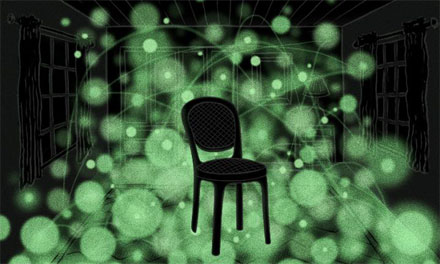Thermal noise imaging, a novel method for making 3D images of biological structures at high resolution and under natural conditions, may offer insight into how cells communicate with one another, helping to further the development of artificial organs such as skin or heart tissue.
Nanometer-scale imaging of soft structures at room temperature poses a challenge because fast thermal fluctuations can lead to significant motion blur if the position of the structure is measured with insufficient bandwidth. Precise localization is also affected by optical heterogeneities.
For more precise imaging of soft structures, researchers at the University of Texas at Austin developed quantitative thermal noise imaging, a 3D scanning probe technique for imaging soft, optically heterogeneous and porous matter with submicroscopic spatial resolution in aqueous solution.

Scientists at the University of Texas at Austin have developed a new microscopy technique for looking at nanoscale structures in biological samples that is analogous to using a glowing rubber ball to image a chair in a dark room. Courtesy of Jenna Luecke.
The researchers offered an analogy to illustrate how thermal noise imaging works: If you were to throw a glowing rubber ball into a dark room and use a camera to collect a series of high-speed images of the ball as it bounces around, you would see that as the ball moves around the room, it isn't able to move through solid objects such as tables and chairs. By combining millions of images taken so fast that they don't blur, you would be able to build a picture of where there are objects (wherever the ball cannot go) and where there are no objects (where the ball can go).
In thermal noise imaging, the equivalent of the rubber ball is a nanosphere that moves around in a sample by natural Brownian motion.
"This chaotic wiggling is a nuisance for most microscopy techniques because it makes everything blurry," says physicist Ernst-Ludwig Florin. "We've turned it to our advantage. We don't need to build a complicated mechanism to move our probe around. We sit back and let nature do it for us."
The researchers imaged individual microtubules and collagen fibrils in a network, demonstrating thermal noise imaging can yield quantitative nanoscale images of soft-matter structures; that the structures can be localized with a precision of about 10 nm; and that their local dynamics can be quantified with 50-kHz bandwidth and subnanometer amplitudes.
The probe particles used by the researchers are larger than fluorescent probes and are not specifically attached to a target. Because thermal noise imaging is not limited by labeling density or photobleaching, higher resolution can be achieved by recording more probe positions while confining the probe’s diffusion to the same trapping volume.
The original concept for the thermal noise imaging technique was published and patented in 2001, but technical challenges prevented it from being developed into a fully functioning process until now.
The tool has allowed the researchers to measure for the first time the mechanical properties of collagen fibrils in a network.
"If you want to build artificial skin, you have to understand how the natural components work," says Florin. "You could then better design a collagen network that acts as a scaffolding that encourages cells to grow in the right way."
The research was published in Nature Communications (doi: 10.1038/ncomms12729).